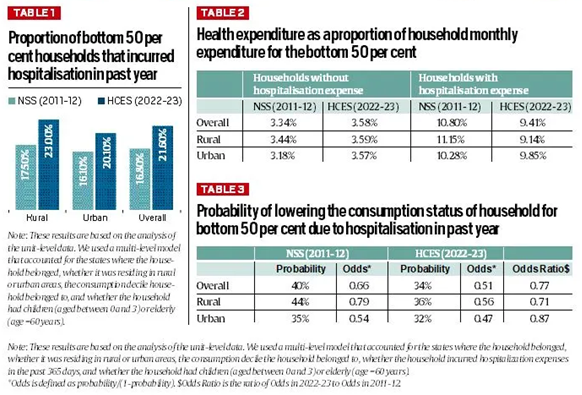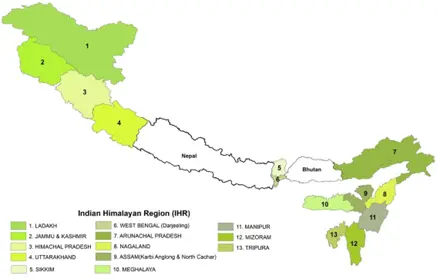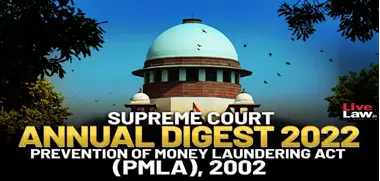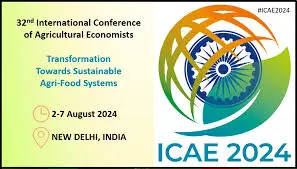Monday, 12th August 2024
Refugee Rights, the Gendered Nature of Displacement
Why in the news?
- According to the United Nations High Commissioner for Refugees (UNHCR), by the end of 2023, 11.73 crore individuals were forcibly displaced due to various forms of violence and persecution.
- India's role as a refugee-receiving nation, the gendered dynamics of refugee demographics, and the measures required to improve their rights and living conditions.
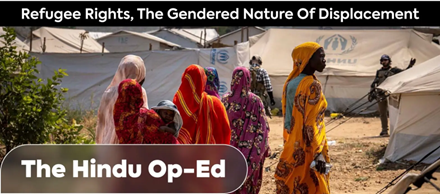
India as a Refugee-Receiving Nation
- Historical Context: India has a longstanding history as a host nation for refugees, having accommodated over 200,000 refugees from various groups since independence.
- Current Status: As of January 31, 2022, approximately 46,000 refugees and asylum-seekers were registered with the UNHCR in India. Of this population, 46% are women and girls, representing a particularly vulnerable demographic.
- Challenges for Women: These women often bear the responsibility of caring for their families, a burden exacerbated by the challenges associated with displacement.
The Gendered Nature of Displacement
- UN Population Fund's Observation: The UN Population Fund aptly notes that the face of displacement is female. The gendered nature of displacement has a profound impact on the physical and mental health of refugee women.
- Stressors: Refugee women face multiple stressors, including the deaths of family members, hardships of camp life, changes in family dynamics, and a lack of access to community networks.
- Vulnerability: Prolonged conflicts, coupled with socio-economic challenges and the breakdown of traditional social support systems, heighten their exposure to gender-based violence and abuse.
Mental Health Crisis Among Displaced Women
- Trauma and Vulnerability:
- Displaced women often endure multiple layers of trauma, beginning with the initial displacement.
- Exposure to extreme violence, witnessing the death or injury of loved ones, and the destruction of homes can lead to long-lasting mental health issues such as PTSD, anxiety, and depression.
- Displacement strips women of their social roles, security, and support systems, leaving them vulnerable.
- Stress in Refugee Camps:
- Refugee camps often exacerbate psychological distress due to harsh living conditions, overcrowding, lack of privacy, and limited access to basic necessities.
- The constant threat of sexual violence further intensifies mental health struggles.
- The breakdown of traditional family structures places the burden of survival on women, adding to their emotional and psychological load.
- Gender-Based Violence (GBV):
- Conflict zones and refugee camps often see increased instances of sexual exploitation, domestic violence, and other abuses.
- Women may be forced into transactional sex for survival or face violence within their families due to the stress of displacement.
- The psychological impact of GBV includes a higher risk of developing mental health disorders such as PTSD, depression, and anxiety.
International and Domestic Legal Frameworks
- UNCRPD:
- The UN Convention on the Rights of Persons with Disabilities (UNCRPD) recognizes psychosocial disabilities and guarantees a range of rights to affected individuals, particularly women and girls who face multiple forms of discrimination.
- India's Legal Framework:
- India ratified the UNCRPD and enacted the Rights of Persons with Disabilities Act, 2016 (RPWDA), ensuring rights for persons with disabilities, including the right to healthcare.
- However, these guarantees do not extend to refugees, leaving them marginalised and with limited access to healthcare services.
Indian Refugee Policy
- Lack of Specific Legislation: India does not have dedicated legislation for refugees and is not a signatory to the 1951 Refugee Convention or its 1967 Protocol.
- Existing Legal Framework:
- Foreigners Act, 1946: Empowers the Central government to detect, detain, and deport illegal foreign nationals.
- Citizenship Act, 1955: Addresses citizenship-related issues.
- Citizenship Amendment Act, 2019 (CAA): Provides citizenship to persecuted minorities from Bangladesh, Pakistan, and Afghanistan.
- UNCRPD and RPWDA: Recognize the rights of persons with disabilities, including refugees, but practical implementation is limited for non-citizens.
Challenges and Barriers
- Gender Blindness: Development policies often overlook gender-specific factors affecting displaced populations.
- Psychological Vulnerability: Displaced women are highly susceptible to conditions such as PTSD, anxiety, and depression.
- Limited Mental Health Services: Refugee women face challenges such as stigma, financial constraints, and limited access to mental health services.
Recommendations
- Need for Codified Legal Framework: Establish a comprehensive legal framework to address refugee issues and align with international commitments.
- Integration of Refugees with Disabilities: Ensure policies and programs are inclusive of refugees with disabilities.
- Data Collection: Implement systematic data collection on refugees' health conditions to improve policymaking and support systems.
Conclusion
The plight of displaced women, especially those with psychosocial disabilities, is a pressing humanitarian issue requiring urgent attention. A concerted effort is needed to establish a comprehensive legal framework that extends protection and support to all displaced individuals, ensuring their right to life, health, and dignity.
|
UPSC Civil Services Examination PYQ Mains: Q: 1 “Refugees should not be turned back to the country where they would face persecution or human right violation”. Examine the statement with reference to the ethical dimension being violated by the nation claiming to be democratic with open society. (2021) Q: 2 Cross-border movement of insurgents is only one of the several security challenges facing the policing of the border in North-East India. Examine the various challenges currently emanating across the India-Myanmar border. Also, discuss the steps to counter the challenges. (2019) |
Source: TH
Will the new Saudi law help migrant domestic workers
Why in the news?
- Saudi Arabia is set to implement a new law governing domestic workers (MDWs).
- This change is significant as Saudi Arabia, alongside other GCC states, employs a substantial number of MDWs, totaling approximately 5.5 million across the region.
- Historically, MDWs in these countries have been excluded from general labour protections, leading to significant vulnerabilities.
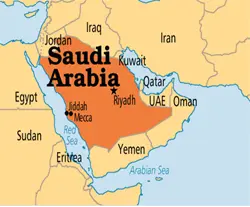
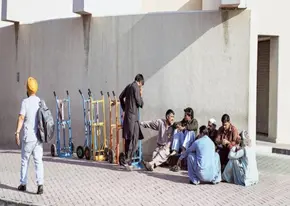
- Current Situation:
- As of Q1 2024, Saudi Arabia hosts around 3.91 million MDWs, with 27.32 lakh males and 11.81 lakh females, representing 25% of the workforce.
- The exclusion of MDWs from standard labour laws has led to gaps in protection, exacerbated by the Kafala system, which ties workers’ visas to their employers.
Existing and Upcoming Laws:
- Current Protections:
- Existing MDW laws are insufficient in addressing protection gaps, particularly for female workers who face severe abuse from both employers and officials.
- The absence of a minimum wage and lack of clear overtime regulations further complicates the situation.
- New Law Features: The new MDW law introduces several improvements:
- Maximum working hours set at 10 per day
- Weekly days off
- Prohibition of identity document confiscation
- Right to communication
- Conditions for contract termination with retained entitlements
- Compensation for unjust termination
- Annual paid leave of one month
- Employer-covered annual return ticket
- Mandatory insurance for new MDW contracts
- Inclusion in the Wages Protection System (WPS) starting July 2024, with full coverage by end of 2025
- Concerns with the New Law:
- Saudi Arabia's historical challenges in enforcing protections for migrant workers, including wage theft and exploitation.
- Female MDWs remain vulnerable to being reported as absconding, with risks of the law being misused by abusive employers.
- Limited labour inspections, communication barriers, and language issues may impede the effective assessment and enforcement of the new regulations.
Categories of Migrant Domestic Workers:
- Roles and Distribution:
- MDWs in Saudi Arabia are categorised into roles such as domestic workers, drivers, nannies, cooks, and specialised roles like physiotherapists.
- The largest category, "servants and house cleaners," includes over 20 lakh workers, with approximately 60% being female.
- Male domestic workers, particularly drivers, constitute nearly 70% of the sector, reflecting cultural norms and household needs.
- Kafala System:
- The Kafala system grants employers significant control over MDWs, leading to conditions akin to bonded labour.
- Recruitment costs range from $2,000 to $5,000, fostering a perception of ownership among employers.
- The Musaned system, which oversees recruitment and employment, often favours employers, exacerbating these issues.
Indian Migrant Domestic Workers:
- Demographics and Regulations:
- Indians represent a significant portion of MDWs in Saudi Arabia, totaling 26.5 lakh. Recruitment must be through the eMigrate system, with a minimum referral wage of SAR1,500 (₹33,400).
- Special provisions include a minimum age of 30 for female MDWs and a $2,500 financial bank guarantee.
- Challenges:
- Consular support for distressed Indian MDWs is often limited to repatriation, with minimal assistance provided for accessing justice or securing entitlements before deportation.
- The Embassy in Riyadh and the consulate in Jeddah are under-resourced to effectively meet these needs.
Source: TH
Hindenburg’s Claims on SEBI Chief Madhabi Buch
Why in the news?
- Hindenburg Research has alleged that Madhabi Puri Buch, Chairperson of the Securities and Exchange Board of India (SEBI), held stakes in unidentified offshore companies reportedly involved in the "Adani money siphoning scandal."
- Buch is responsible for investigating allegations of malfeasance and stock price manipulation related to the Adani group, as flagged by Hindenburg Research 18 months ago.
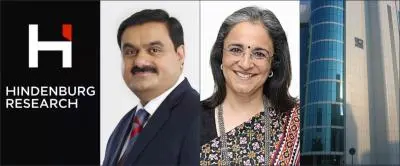
What is Hindenburg Research?
- Hindenburg Research is a US-based investment research firm, established by Nathan Anderson in 2017.
- The firm is named after the 1937 Hindenburg disaster, a man-made explosion of a German airship.
- It specialises in forensic financial research, focusing on accounting irregularities, unethical business practices, and undisclosed financial issues or transactions.
Hindenburg Research Report on the Adani Group in 2023:
- The report claims that Gautam Adani, head of the Adani group, manipulated stock prices in seven key listed companies, thereby increasing the group’s valuation by $100 billion since 2020.
- It also alleges that Rajesh Adani, Gautam's younger brother, was arrested twice for forgery and tax fraud but was later promoted to managing director.
- Additionally, Vinod Adani, Gautam’s elder brother, is accused of operating numerous shell companies central to the money laundering claims.
Hindenburg Research Report on SEBI:
- The report alleges that SEBI Chairperson Madhabi Puri Buch and her husband had investments in offshore firms linked to Adani's elder brother.
- These investments reportedly predate Buch’s SEBI appointment in 2017 and her chairperson role in 2022.
- It is suggested that Buch’s husband transferred sole control of these investments shortly before her SEBI appointment to avoid scrutiny.
- The report implies this may explain SEBI’s lack of significant action against alleged offshore shareholders in the Adani Group.
Allegations by Hindenburg:
- Lack of Action on Adani's Alleged Offshore Network
- Hindenburg Research has alleged that SEBI failed to conduct a thorough investigation into the Adani Group’s purported network of offshore entities in Mauritius.
- The report claims that an Adani director established the "IPE Plus Fund" via India Infoline Ltd (IIFL).
- Which was allegedly used by Vinod Adani, Gautam Adani’s brother, to channel funds out of the Adani Group and invest in Indian markets.
- Involvement of SEBI Chairperson and Her Husband
- Hindenburg has accused SEBI Chairperson Madhabi Puri Buch and her husband, Dhaval Buch, of holding investments in offshore funds associated with the Adani Group's alleged money laundering activities.
- The report notes that Madhabi Puri Buch owned a 100% stake in an offshore Singaporean consulting firm, Agora Partners, which she transferred to her husband shortly after her appointment as SEBI Chairperson.
- Conflict of Interest with Blackstone
- The report claims that while Madhabi Puri Buch was serving as a SEBI official, her husband was appointed as a senior adviser to Blackstone, despite lacking prior experience in real estate or capital markets.
- During his tenure, Blackstone reportedly sponsored two major real estate investment trusts (REITs) in India that received SEBI approval for IPOs.
- Additionally, SEBI made notable changes to India’s REIT regulations during this period, which could have benefited Blackstone.
- Undisclosed Promotion of REITs
- Hindenburg has alleged that Madhabi Puri Buch promoted REITs at industry conferences without disclosing her husband’s connection to Blackstone, which was poised to benefit from this asset class.
- Consulting Firm Earnings
- The report alleges that Madhabi Puri Buch owned 99% of Agora Advisory, an Indian consulting firm that reportedly earned significantly more from consulting activities than her disclosed salary from SEBI.
- Supreme Court Remarks
- The Supreme Court of India noted that SEBI's investigations into the funding of Adani's offshore shareholders had not produced significant results.
- Hindenburg suggested that SEBI might have benefited from investigating the involvement of its own chairperson in these matters.
Mitigation Strategies:
- Establish a Process: Develop a framework to identify and manage potential conflicts of interest, specifying how they should be handled and who should be involved.
- Disclosure: Ensure that conflicts of interest are openly declared.
- Training: Provide training to directors to understand and manage conflicts of interest effectively, including scenario-based learning.
- Declaration of Interests: Regularly declare personal interests that could influence professional decisions.
Legal Framework in India:
- Under the Companies Act, 2013, directors must avoid situations that present a direct or indirect conflict with the company’s interests.
- The act mandates addressing both actual and potential conflicts of interest to ensure adherence to fiduciary duties.
|
UPSC Civil Services Examination Previous Year Question (PYQ) Prelims Q:1 In the parlance of financial investments, the term ‘bear’ denotes (2010) (a) An investor who feels that the price of a particular security is going to fall (b) An investor who expects the price of particular shares to rise (c) A shareholder or a bondholder who has an interest in a company, financial or otherwise (d) Any lender whether by making a loan or buying a bond
Ans: (a) |
Source: ET
Why are India's Gaganyatris Going to the ISS
Why in the news?
- ISRO has announced that two astronauts selected for its maiden human spaceflight mission, Gaganyaan, will travel to the U.S. for training for a mission to the International Space Station (ISS).
- Wing Commander Shubhanshu Shukla is assigned to fly to the ISS, with Group Captain Prashanth Nair serving as his backup.
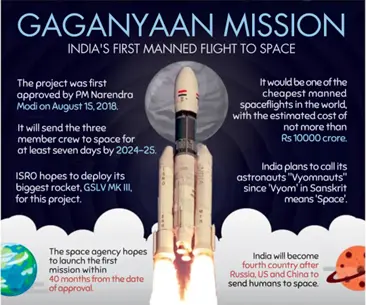
What is the Gaganyaan Mission?
- Objective: The Gaganyaan project aims to demonstrate human spaceflight capability by launching a crew of four members to an orbit of 400 km for a 3-day mission and ensuring their safe return to Earth.
- Indian Human Spaceflight Programme (IHSP): Initiated in 2007 by ISRO, this programme focuses on developing the technology required to launch crewed spacecraft into low Earth orbit (LEO).
- Launch Vehicle: The Gaganyaan mission will use the Launch Vehicle Mark-3 (LVM3/GSLV Mk3), a reliable heavy-lift rocket from ISRO. The LVM3 has been re-configured for human rating and is now called Human Rated LVM3/HLVM3.
What is Gaganyaan’s Status?
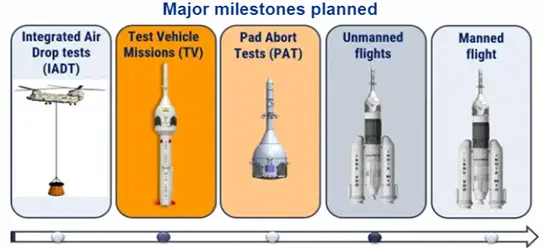
- Completed Tests: ISRO has completed the pad abort and high-altitude abort tests and has tested the crew escape system.
- Launch Vehicle: The LVM-3 launch vehicle is nearing completion of human rating.
- Crew Module: Development is ongoing, and it may require international manufacturing.
- Systems Under Development: Engineers are working on the Environmental Control and Life Support System and the Integrated Vehicle Health Management System.
- Upcoming Milestones: The next major milestones include a series of uncrewed suborbital and orbital test flights.
Why are India's Gaganyatris Going to the ISS?
- Background: In 2023, a joint statement from the U.S. and India, following a meeting between the Indian Prime Minister and the U.S. President, included a plan for a joint mission to the ISS in 2024.
- ISS Mission: The Axiom-4 (Ax-4) mission, organised by Axiom Space, will be the fourth crewed mission to the ISS. It will last 14 days, with SpaceX providing the launch vehicle and Crew Dragon capsule.
- Role of Gaganyatris: Shubhanshu Shukla and Prashanth Nair will participate in this mission as the mission pilot and backup. They will conduct scientific research, technology demonstration experiments, and space outreach activities.
- Selection and Approval: The National Mission Assignment Board of ISRO selected Shukla and Nair. Their participation requires approval from the Multilateral Crew Operations Panel, which includes representatives from NASA, Roscosmos (Russia), JAXA (Japan), ESA (Europe), and CSA (Canada).
- Purpose: The mission will provide valuable experience for the Gaganyaan programme and enhance human spaceflight cooperation between ISRO and NASA.
|
UPSC Civil Services Examination, Previous Year Question (PYQ) Prelims: Q:1 What is the purpose of the US Space Agency’s Themis Mission, which was recently in the news? (2008)
Ans: (c)
Q:2 Consider the following statements: (2016)
Which of the statements given above is/are correct?
Ans: (c) |
Source: TOI
No population Census — in the dark without vital data
Why in the news?
- India's decadal Census has been delayed by over three years, and there is a growing misconception among officials about potentially substituting the Census with alternative methods for counting the population.
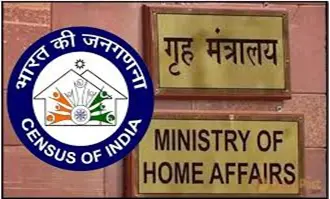
Significance of Calculating Census:
- Comprehensive Population Data:
- Purpose: The Census offers a detailed count of the population, including locational, familial, and individual information.
- Examples: It provides insights into population density, age distribution, educational attainment, and employment status.
- Foundation for Surveys and Indicators:
- Role: The Census serves as a foundational frame for large-scale surveys like the National Family Health Survey (NFHS) and Periodic Labour Force Survey (PLFS).
- Impact: Accurate Census data is essential for generating indicators related to Sustainable Development Goals (SDGs), particularly for disaggregated data below the sub-national level.
- Support for SDG Monitoring:
- Importance: Census data is crucial for monitoring progress on SDGs related to poverty reduction, gender equality, and health.
- Example: Detailed demographic data helps identify disparities and target interventions effectively.
- Demographic Transition Insights:
- Significance: The Census captures changes in population composition, familial structures, and occupational distribution, especially during periods of rapid demographic transition.
- Global Implications:
- Influence: Accurate Census data is vital for global demographic studies and projections, including indices like the Global Health Security Index and Multidimensional Poverty Indexes.
Changes to Understand Before Taking Census Count:
- Population Dynamics:
- Observation: Significant changes in population count and composition, including migration, fertility, and mortality rates, must be understood.
- Example: India’s average annual growth rate has decreased from 2.2% in 1971 to 1.1% in 2021, with projections indicating further declines.
- Impact of COVID-19:
- Effect: The pandemic has influenced health, employment, and livelihoods, which need to be reflected in the Census.
- Example: Over 500,000 COVID-19 related deaths have impacted mortality statistics and health indicators.
- Socio-economic Transformations:
- Change: Shifts in education, occupation, and employment patterns over the past decade are important for understanding current societal trends.
- Example: The literacy rate in India increased from 64.8% in 2001 to 77.7% in 2011, with expected further improvements.
- Infrastructure and Development Changes:
- Consideration: Transformations in physical and digital infrastructure, as well as regional development patterns, must be considered.
- Example: The pandemic accelerated digital technology adoption, with internet users increasing from 560 million in 2019 to over 800 million in 2022.
Demand for Caste Census in India:
- Political Motivations:
- Reason: The call for a caste Census is driven by political interests to establish differential entitlements based on perceived representation and deprivation.
- Example: Leaders from the Indian National Developmental Inclusive Alliance (INDIA) advocate for a caste Census.
- Historical Context:
- Background: Caste auditing was included in earlier Census exercises but discontinued for specific reasons.
- Example: British-era Censuses from 1881 to 1931 enumerated castes, but post-independence, the Government of India decided not to enumerate castes in the 1951 Census, except for SCs and STs.
- Assessment of Mobility:
- Issue: There is a lack of systematic assessment of social mobility across caste lines, despite affirmative action.
- Example: While reservations exist for OBCs and SCs, the impact on social mobility remains unclear due to insufficient data.
Way Forward:
- Standardised Indicators:
- Standardisation by population count, segmented by age, sex, etc., is essential for accurate SDG indicators. Surveys alone are insufficient without a Census.
- Limitations of Surveys:
- Surveys and estimates cannot fully capture dynamic demographic and socio-economic changes. A Census is necessary for comprehensive data.
- Caste Auditing:
- To establish entitlements based on caste representation and deprivation. Caste auditing should assess both tangible and intangible domains, like education and occupation.
- Mobility Assessment:
- Lack of systematic assessment of caste-based mobility in education and occupation, despite affirmative action. A Census is needed for accurate analysis.
- Scientific Community’s Role:
- The scientific community should advocate for the Census, as surveys and administrative data cannot replace it.
- Justice Rohini Commission:
- A nationwide caste census is necessary for accurate socio-economic categorization, especially for states with varied caste lists
|
UPSC Civil Services Examination PYQ Mains Q:1 Has caste lost its relevance in understanding the multi-cultural Indian Society? Elaborate your answer with illustrations. (2020) |
Nankai Trough
Why in the news?
- Japan’s meteorological agency recently reported an increased likelihood of strong shaking and large tsunamis in the Nankai Trough.
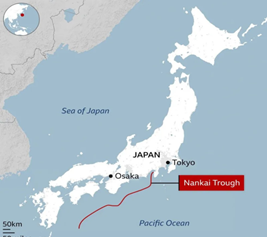
About Nankai Trough:
- Subduction Zone: It is a "subduction zone" located in the Pacific Ocean where two tectonic plates converge, leading to massive past earthquakes.
- Tectonic Interaction: This underwater subduction zone, nearly 900 km long, is where the Eurasian Plate meets the Philippine Sea Plate, forcing the latter beneath the former and into the Earth's mantle.
- Location: The Nankai Trough extends from Shizuoka, just west of Tokyo, to the southern tip of Kyushu Island.
- Seismic History: It has been the epicentre of destructive earthquakes with magnitudes of eight or nine, occurring every century or two.
- Megathrust Quakes: These massive earthquakes, often occurring in pairs, have historically triggered dangerous tsunamis along Japan's southern coastline.
What is a Subduction Zone?
- Definition: A subduction zone is where two tectonic plates collide, with one plate diving, or subducting, beneath the other.
- Tectonic Plates: These are fragments of the Earth’s rigid outer layer that slowly drift across the planet’s surface over millions of years.
- Plate Tectonics: This is the core principle of plate tectonics, which explains how Earth's crustal plates move over the mantle, carrying continents along.
- Global Occurrence: Subduction zones are typically found in a horseshoe shape around the Pacific Ocean, including areas off the coasts of the USA, Canada, Russia, Japan, Indonesia, New Zealand, and South America, known collectively as the "Ring of Fire."
- Seismic Activity: These zones are the most seismically and volcanically active on Earth, responsible for over 80% of the world's largest earthquakes and the majority of active volcanoes.
Source: IE
Exercise Udara Shakti
Why in the news?
- The Indian Air Force (IAF) and the Royal Malaysian Air Force (RMAF) recently participated in Exercise Udara Shakti 2024.

About Exercise Udara Shakti:
- Joint Air Exercise: This air exercise was conducted in collaboration with the Royal Malaysian Air Force at Kuantan, Malaysia.
- Objective: The exercise aimed to enhance operational efficiency, with technical experts from both air forces exchanging their maintenance practices.
- Key Activities:
- During the exercise, the IAF's Su-30MKI fighter jets participated in air combat missions alongside the RMAF's Su-30MKM fighters.
- This allowed the crews of both air forces to familiarise themselves with each other's operational protocols, thereby improving interoperability, commonality, and overall effectiveness in Su-30 aircraft operations.
Key Facts about Su-30MKI:
- Multirole Combat Aircraft: The Sukhoi Su-30MKI is a versatile multirole combat fighter aircraft.
- Development: It was jointly developed by the Sukhoi Design Bureau and Hindustan Aeronautics Limited (HAL) for the Indian Air Force.
- Features: Based on the Su-30 fighter aircraft, the Su-30MKI is equipped with thrust vectoring control and canards, enhancing its manoeuvrability and combat capabilities.
Source: PIB
Ceropegia Shivrayiana
Why in the news?
- A new flowering plant species from the 'Ceropegia' genus has been discovered within the Vishalgad premises in Maharashtra and named Ceropegia Shivrayiana.

About Ceropegia Shivrayiana:
- Naming and Discovery: This species is named in honour of Chhatrapati Shivaji Maharaj, as it was discovered on one of his renowned forts, Vishalgad.
- Floral Characteristics: The plant has unique, tubular flowers that are specially adapted to attract moths for pollination.
- Habitat: Ceropegia Shivrayiana thrives in rocky terrains and can grow in nutrient-poor soils.
- Family: It belongs to the Asclepiadaceae family, known for its medicinal plants and significant ecological importance.
- Conservation: Due to the ongoing threat of habitat loss, conserving this plant is crucial.
Key Facts about Vishalgad Fort:
- Location: Vishalgad Fort is situated in Vishalgad village, Kolhapur district, Maharashtra.
- Historical Significance: Locally called Khelna or Khilna, Vishalgad Fort was a significant fort of the Maratha Empire. It was built in 1058 by Shilahara king Marsinh and was initially known as Khilgil.
- Rulers: The fort was under the rule of the Seuna Yadavas of Devagiri, Allauddin Khilji, the Vijayanagar Empire, and the Adil Shahi.
- Capture by Shivaji: In 1659, Shivaji captured the fort from Adil Shah and renamed it 'Vishalgad.'
- Famous Structures: The fort houses the Dargah of Hazrat Sayed Malik, Rehan Meera Saheb, Amruteshwar Temple, Shri Nrusinha Temple, and Sati's Vrindavan, attracting numerous tourists.
Source: TOI
Asceua tertia
Why in the news?
- A new species of ground-dwelling spider, Asceua tertia, was recently discovered in the Western Ghats.

About Asceua tertia:
- Discovery Location: This spider was found in the Shendurney Wildlife Sanctuary, part of the Western Ghats.
- Species Significance: Asceua tertia is the third species of the genus Asceua documented in India, following Asceua cingulata (Simon, 1905) and Asceua thrippalurensis (Sankaran, 2023).
- Genus and Family:
- The genus Asceua belongs to the ant-eating spider family Zodariidae.
- It is distinguished by features such as small size, laterally compressed bulbs, well-developed cymbial folds, long and convoluted copulatory ducts, and dual femoral glands.
Physical Features of Asceua tertia:
- Size: Ranges from 2.54 mm in males to 3.2 mm in females.
- Male Characteristics:
- Males have a yellow-brown prosoma, with creamy white to yellow-brown leg and palp segments featuring broad brown patches and narrow longitudinal stripes.
- The abdomen shows three pairs of narrow, creamy white stripes arranged obliquely, a white dot near the rear, and numerous tiny creamy white spots on the sides.
- Female Characteristics: Females have a dark brown prosoma and a wide, oval abdomen with four pairs of creamy white stripes, small anterior, and broad posterior creamy white patches on the sides.
Key Facts about Shendurney Wildlife Sanctuary:
- Location: Situated in the Western Ghats, within the Kollam district of Kerala, India.
- Name Origin: The sanctuary is named after Chenkurinji (Gluta travancorica), a tree species endemic to the region.
- Biosphere Reserve: It is part of the Agasthyamalai Biosphere Reserve.
- Flora and Fauna: The sanctuary is covered by tropical evergreen and semi-evergreen forests and is home to diverse wildlife, including tigers, gaurs, elephants, sambar deer, sloth bears, and various butterfly species like the Malabar Raven and Malabar banded swallowtail.
Source: TH
Climate Change Impact on World Economy
Context:
- Climate change is reshaping the global geoeconomic landscape, with significant economic impacts.
- The US National Bureau of Economic Research estimates that the world’s GDP would be 37% higher today without global warming since 1960.
- A study in Nature forecasts a nearly 20% drop in average incomes over the next 26 years due to climate impacts.
- While climate policy has focused on mitigation, adaptation remains underfunded. Investing in climate resilience is essential for both environmental protection and economic stability.
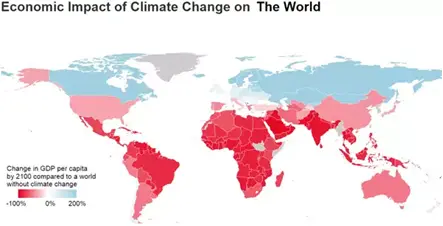
Climate Change and Its Impact on the Global Geoeconomic Landscape
- Shifting Agricultural Patterns: Climate change is altering agricultural suitability, reducing yields in traditionally fertile areas like the Middle East and North Africa, leading to food insecurity and economic instability.
- Resource Scarcity: Water scarcity due to climate change is increasing tensions over shared resources, such as in the Nile River basin, impacting agriculture and hydropower.
- Migration and Displacement: Climate change-induced sea level rise could displace millions, creating economic challenges and resource conflicts, as seen in Bangladesh.
- Erupted Arctic Economic Opportunities: Melting Arctic ice is opening new shipping routes and resource access, sparking competition among nations like Russia, China, and India.
- Climate-induced Conflicts: Climate change is intensifying existing conflicts, such as the Syrian civil unrest fueled by prolonged drought.
- Climate-related Supply Chain Disruptions: Extreme weather can disrupt global supply chains, as demonstrated by the 2011 Thailand floods affecting electronics and automotive parts.
- Climate Gentrification: Wealthier individuals may relocate to safer areas, leading to economic displacement and marginalisation of vulnerable communities.
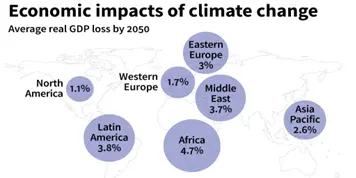
Major Impacts of Climate Change on the Indian Economy
- Reduced Agricultural Productivity and Yield: Climate change threatens crop yields, impacting the rural economy and driving urban inflation, with potential rice yield reductions by 20% by 2050.
- Setback to Industrial and Service Sectors: Increased costs and reduced profits in industrial sectors due to climate regulations, and economic impacts from insurance claims and service disruptions.
- Infrastructure Damage: Extreme weather, like floods and heatwaves, causes significant infrastructure damage, with India spending USD 3 billion on flood-related economic damage in the past decade.
- Labour Market Impacts: Health hazards from climate change could reduce productivity and cause migration, with up to 4.5% of GDP at risk by 2030 and significant job losses projected.
- Risks for Banks and Financial Institutions: Climate risks, including physical and transition risks, can affect banks and financial institutions through direct, indirect, and spillover effects.
- Impacts on High-Emission Industries: High-emission industries contribute significantly to greenhouse gases; 40% of emissions could be reduced by switching to renewables, with remaining challenges in hard-to-abate sectors.
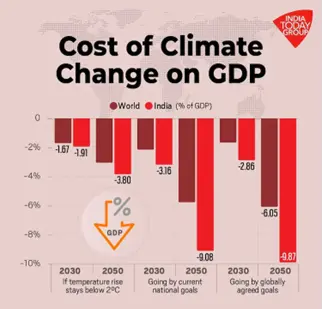
Key Initiatives India has Undertaken to Tackle Climate Change:
- National Action Plan on Climate Change (NAPCC): Launched in 2008, the NAPCC outlines India's strategy to address climate change through eight core missions focusing on areas such as energy efficiency, renewable energy, sustainable agriculture, and water management.
- National Solar Mission (NSM): Initiated in 2010, the NSM aims to promote the use of solar energy, with ambitious targets of achieving 100 GW of solar power by 2022 and increasing this to 280 GW by 2030. This mission is a critical part of India's efforts to enhance the share of renewables in its energy mix.
- National Mission for Enhanced Energy Efficiency (NMEEE): Launched in 2010, NMEEE focuses on improving energy efficiency across various sectors. Key programs under this mission, help reduce energy consumption and lower greenhouse gas emissions, contributing to India's climate mitigation goals.
- National Mission on Sustainable Habitat: It aims to make urban areas more climate-resilient and sustainable, addressing the environmental challenges of rapid urbanisation.
- National Water Mission: The mission aims to ensure water security through sustainable water management practices, including conservation, efficiency, and equitable distribution.
- National Mission for a Green India (GIM): Launched in 2011, GIM aims to contribute to carbon sequestration and biodiversity conservation, essential for mitigating climate change.
- National Mission on Sustainable Agriculture: It aims to make agriculture more resilient to the impacts of climate change, ensuring food security and livelihood sustainability.
- Panchamrit Commitments: Announced at COP26 in 2021, these commitments include achieving 500 GW of non-fossil fuel energy capacity by 2030, reducing projected carbon emissions by 1 billion tonnes by 2030, and achieving net-zero emissions by 2070. These goals reflect India's enhanced climate ambition on the global stage.
- Green Hydrogen Mission: Launched in 2023, this mission promotes the production and use of green hydrogen as a clean energy source. It focuses on renewable energy integration, industrial decarbonization, and positioning India as a global leader in green hydrogen, supporting the transition to a low-carbon economy.
Measures to Mitigate the Impacts of Climate Change on the Indian Economy:
- Exploring Industrial Symbiosis: Promote circular economy models to minimise waste and reuse materials, incentivizing companies to adopt sustainable practices.
- Foster Public-Private Partnerships for Green Innovation: Encourage partnerships to develop green technologies, with government support for startups and innovation in climate solutions.
- Promote Climate-Conscious Urban Planning: Integrate climate adaptation and mitigation into urban planning through initiatives like the Smart Cities Mission.
- Develop Climate-Resilient Special Economic Zones (SEZs): Create SEZs with sustainable practices to attract green businesses, using Masdar City as a model.
- Develop a National Green Taxonomy: Establish a green taxonomy to define sustainable economic activities and guide investments and policies, drawing from the EU model.
- Green Bond Financing for Infrastructure: Issue sovereign green bonds to fund climate-resilient infrastructure projects, such as flood-resistant embankments and renewable energy initiatives.
|
UPSC Civil Services Examination, Previous Year Question (PYQ) Prelims Q.1 In the context of India’s preparation for Climate-Smart Agriculture, consider the following statements: (2021)
Which of the statements given above are correct?
Ans: (d)
Q.2 Which of the following best describes/describes the aim of ‘Green India Mission’ of the Government of India? (2016)
Select the correct answer using the code given below.
Ans: (c)
Q.3 With reference to ‘Global Climate Change Alliance’, which of the following statements is/are correct? (2017)
Select the correct answer using the code given below:
Ans: (a)
Mains Q.1 Describe the major outcomes of the 26th session of the Conference of the Parties (COP) to the United Nations Framework Convention on Climate Change (UNFCCC). What are the commitments made by India in this conference? (2021) Q.2 ‘Climate Change’ is a global problem. How will India be affected by climate change? How Himalayan and coastal states of India are affected by climate change? (2017) |
Source: IE
Share the article
Edukemy’s Current Affairs Quiz is published with multiple choice questions for UPSC exams
MCQ
Get Latest Updates on Offers, Event dates, and free Mentorship sessions.

Get in touch with our Expert Academic Counsellors 👋
FAQs
UPSC Daily Current Affairs focuses on learning current events on a daily basis. An aspirant needs to study regular and updated information about current events, news, and relevant topics that are important for UPSC aspirants. It covers national and international affairs, government policies, socio-economic issues, science and technology advancements, and more.
UPSC Daily Current Affairs provides aspirants with a concise and comprehensive overview of the latest happenings and developments across various fields. It helps aspirants stay updated with current affairs and provides them with valuable insights and analysis, which are essential for answering questions in the UPSC examinations. It enhances their knowledge, analytical skills, and ability to connect current affairs with the UPSC syllabus.
UPSC Daily Current Affairs covers a wide range of topics, including politics, economics, science and technology, environment, social issues, governance, international relations, and more. It offers news summaries, in-depth analyses, editorials, opinion pieces, and relevant study materials. It also provides practice questions and quizzes to help aspirants test their understanding of current affairs.
Edukemy's UPSC Daily Current Affairs can be accessed through:
- UPSC Daily Current Affairs can be accessed through Current Affairs tab at the top of the Main Page of Edukemy.
- Edukemy Mobile app: The Daily Current Affairs can also be access through Edukemy Mobile App.
- Social media: Follow Edukemy’s official social media accounts or pages that provide UPSC Daily Current Affairs updates, including Facebook, Twitter, or Telegram channels.

